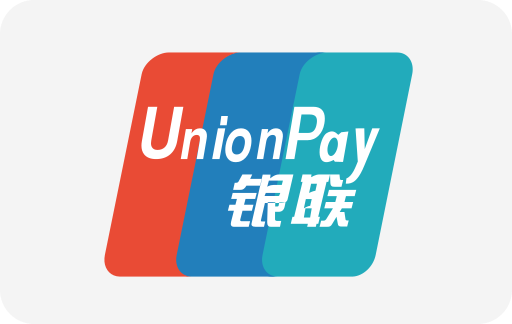
Understanding KPIs: The Cornerstone of Digital Performance Measurement
In the rapidly evolving landscape of digital business, especially within dynamic hubs like Singapore, the concept of Key Performance Indicators (KPIs) has emerged as the fundamental tool for executives seeking to quantify success and drive continuous improvement. As an executive MBA instructor with a deep background in content marketing and SEO, I’ve witnessed firsthand how the mastery of KPIs can transform website operations from aimless activities into strategic growth engines.
Before diving into the how, let’s demystify what KPIs truly are. KPIs are quantifiable measures that evaluate the performance of an individual, team, or entire business towards achieving key business objectives. These indicators distill complex data into actionable insights, guiding decision-making with clarity and precision.
Relevance of KPIs in Website Operations
With millions of websites competing globally, a website without measurable performance parameters functions much like a ship without a compass. KPIs tailored for website operations don’t just track raw data; they reflect business goals—whether that’s generating leads, increasing sales, enhancing user engagement, or elevating brand awareness.
For instance, consider a Singapore-based e-commerce company aiming to break into ASEAN markets. Effective KPIs could mean the difference between merely having traffic and converting visitors into loyal customers paying in SGD.
The Building Blocks of KPIs for Websites
1. Align KPIs with Business Objectives
The first and perhaps most critical principle I teach is the alignment of KPIs with overarching business objectives. An ambiguous goal such as “increase website traffic” is insufficient without context. Instead, an aligned KPI would ask, “Increase qualified lead traffic by 30% within six months.”
A useful exercise I have offered my MBA students involves mapping objectives to digital marketing channels. For example, SEO might focus on organic search rankings, while paid campaigns measure click-through rates and conversion costs.
2. Define SMART KPIs
I emphasize the SMART criteria: KPIs should be Specific, Measurable, Achievable, Relevant, and Time-bound. This framework forces clarity and feasibility. For example, “Achieve a 5% conversion rate from the homepage within three months” is a SMART KPI, while “Improve engagement” is vague and non-actionable.
3. Distinguish Between Leading and Lagging Indicators
Understanding whether a KPI is leading (predictive) or lagging (outcome-based) can vastly improve your strategy. For websites, a leading KPI could be “Number of newsletter sign-ups,” signaling future leads. A lagging KPI might be “Monthly sales revenue via the site.” Balancing these provides both operational and strategic insights.
4. Customer-Centric Metrics
Ultimately, websites serve customers. KPIs should measure experiences such as site speed, bounce rate, and Net Promoter Score (NPS). For example, a bounce rate exceeding 50% on a landing page breaches user engagement standards and suggests urgent optimization.
Step-by-Step Process to Set Website Performance KPIs
Step 1: Understand Your Website’s Purpose and Your Audience
This foundational step ensures that KPIs are not arbitrary but tailored to the unique context of your brand and market. Conduct a persona analysis to pinpoint customer demographics, behaviors, pain points, and expectations.
During a consultation with a Singapore fintech startup, we realized their site visitors primarily searched for trust and regulatory compliance information—necessitating KPIs focusing on session duration and information accessibility rather than pure sales.
Step 2: Identify Critical Success Factors (CSFs)
CSFs delineate the vital areas that must perform well to reach your website objectives. For an online retailer, CSFs could include product discovery, payment process ease, and mobile responsiveness. These factors narrow the focus of your KPIs to impactful areas.
Step 3: Select KPIs Matching CSFs
Once CSFs have been established, translate them into measurable KPIs. For example, if mobile responsiveness is a CSF, a KPI could be “Maintain mobile load time below 3 seconds.”
Step 4: Set Benchmark and Targets
Utilizing analytics tools like Google Analytics, SEMrush, or Hotjar, assess current performance to establish realistic benchmarks. Then, based on business growth ambitions and market trends, define specific targets.
Example: If bounce rate currently stands at 60%, target a 45% bounce rate within six months.
Step 5: Allocate Resources and Responsibility
KPIs are only meaningful if monitored and acted upon. Assign roles to team members for data gathering, interpretation, and responsive action. Incorporate performance reporting into regular management meetings to maintain accountability.
Step 6: Continuously Monitor and Refine
Web environments are dynamic; hence KPIs must be regularly reviewed. A KPI relevant today may become obsolete with new digital trends or business pivots. Adopt an agile mindset to experiment, measure, and adjust.
Examples of Common Website KPIs for Various Industries
| Industry | Key Performance Indicator | Description | Target Benchmark |
|---|---|---|---|
| E-commerce (Singapore) | Conversion Rate | Percentage of visitors who make a purchase online | 2-5% (localized SGD pricing-wise optimization) |
| B2B Services | Lead Generation Rate | Number of qualified inquiries per month | 50-100 leads/month depending on industry size |
| Content & Media | Average Session Duration | Time a visitor spends consuming content | 3-5 minutes |
| Non-profit | Donation Conversion Rate | Percentage of site visitors who donate | 1-3% with goals tied to SGD amounts |
| Education & Training | Enrollment Rate from Website | Number of course sign-ups via the site | 10-15% monthly growth |
Practical Insights: Lessons From Real Campaigns in Singapore
During a digital revamp project with a Singapore-based luxury retailer, our team centered KPIs around not just traffic but transactional quality. Instead of aiming for generic high volume, we optimized Google Ads targeting and content marketing around affluent demographics and Singapore tourists. KPIs such as "Average Order Value (AOV)" and "Repeat Visitor Rate" replaced immature vanity metrics, resulting in a 40% revenue increase within six months.
Conversely, when coaching startups in Singapore’s bustling tech scene, I encourage establishing KPIs around user acquisition costs and lifetime value. For instance, if your startup spends SGD 500 on paid campaigns to acquire a customer who spends SGD 1000 lifetime, your marketing is justified. This alignment with financial KPIs is a game-changer for startups seeking to attract investors.
SEO and Content KPIs: Driving Organic Growth
In addition to business KPIs, website operators must measure search engine optimization (SEO) effectiveness. Important KPIs include:
- Organic Traffic Growth: Rising numbers indicate enhanced visibility.
- Keyword Rankings: Track target keywords moving from page 5 to top 3.
- Click-Through Rate (CTR): From search result to site visit.
- Backlink Acquisition: Number of authoritative sites linking to your domain.
While these SEO metrics might not directly translate to revenue immediately, they create a funnel for sustained lead generation. For example, a Singapore-based hospitality client improved their organic traffic by 65% by targeting location-based long-tail keywords combined with content marketing, resulting in an uptick in bookings priced in SGD.
Cost-Effective KPI Tracking Tools for Business Owners
Below is a curated list of affordable or free tools ideal for business owners new to website performance KPIs:
- Google Analytics: Free, versatile for traffic, behavior, and conversion tracking.
- Google Search Console: Monitors indexing, search queries, and page performance.
- SEMrush (Starter Plan ~ SGD 80/month): Keyword tracking and competitor analysis.
- Hotjar (Free Plan): User behavior heatmaps and feedback.
- Tableau Public (Free): Data visualization for KPI dashboards.
Investing as little as SGD 100 monthly in combination of these tools and dedicating team hours towards KPI analysis can dramatically pivot your website strategy from guesswork to data-driven precision.
Avoiding Common Pitfalls in KPI Setting
- Overloading with Metrics: Too many KPIs dilute focus. Select 3-5 primary and up to 10 secondary metrics.
- Mismatched KPIs: KPIs that don’t tie into overall business goals waste resources.
- Ignoring Quality Over Quantity: High traffic with low engagement is a hollow victory.
- Lack of Regular Review: Without adaptation, KPIs stagnate and lose relevance.
Integrating KPIs into a Holistic Digital Strategy
KPI setting should not stand alone but be embedded within your fuller digital marketing framework. Coordination between SEO, paid advertising, social media, email marketing, and UX design ensures cohesive movement toward your KPIs. This synergy creates a compounding effect, accelerating growth.
Furthermore, tying KPIs to financial results measured in SGD or your currency of operation facilitates clear cost-benefit analysis integral to executive decisions and investor confidence.
Final Thoughts on KPI Mastery for Website Leaders
From my extensive experience teaching and consulting, mastering KPIs is akin to acquiring a language through which your website communicates its value to your business. It elevates your leadership capabilities by enabling objective, disciplined evaluation and strategic foresight.
For executives in Singapore’s fast-paced digital economy, refining website KPIs is not optional but essential—balancing ambition with realism, data with intuition, and technology with human insight.
Embrace KPIs as your lighthouse, steering your website confidently through the complex waters of online business success.
Advanced Strategies for KPI Implementation and Optimization
Leveraging Data Segmentation for Deeper Insights
One of the most transformative approaches I've applied during executive MBA workshops in Singapore involves breaking down KPIs via data segmentation. Rather than viewing aggregate KPI data, segmenting by user demographics, traffic sources, device types, and behavior flows uncovers hidden performance trends. For example, analyzing bounce rates by device revealed a 70% bounce on mobile for a client’s product landing page, prompting mobile UX refinements that directly improved conversions and lowered cost per acquisition.
Integrating Qualitative Data with Quantitative KPIs
Numbers tell much of the story, but qualitative insights provide context that turns raw data into actionable strategies. I encourage the use of surveys, customer interviews, and usability testing to complement KPIs. For instance, while Google Analytics showed high exit rates on a pricing page, follow-up user interviews revealed confusion over bundled offerings. Adjusting page copy and visuals moved the needle significantly.
Dynamic KPI Dashboards: Real-Time Decision Making
Creating dynamic KPI dashboards using tools like Tableau or Google Data Studio can transform weekly reporting into real-time decision support. During consultancy with a Singapore-based digital health startup, implementing a dashboard that tracked KPIs such as user registrations, daily active users, and churn rate enabled leadership to pivot marketing and product decisions within days rather than weeks, essential in fast-moving markets.
Embedding KPIs in Organizational Culture
KPIs are only powerful when embraced throughout an organization. I often advise leaders to:
- Communicate KPI relevance: Regularly discuss what KPIs represent and why they matter.
- Empower teams: Encourage team members to own their KPIs, fostering accountability.
- Recognize achievements: Celebrate progress against KPIs to motivate continuous improvement.
This cultural embedding is particularly critical in Singapore, where multi-cultural teams benefit from shared understanding and goal alignment in digital projects.
Case Study: KPI Transformation at a Singapore Travel Portal
A mid-sized travel portal faced stagnating bookings despite increases in traffic. After adopting a KPI realignment structured around customer journey stages, the team identified that while awareness KPIs were strong (high page views and referral traffic), the conversion funnel was leaking at the payment gateway stage. KPIs such as payment abandonment rate and average session duration on checkout pages were added.
Focused UX improvements, payment method diversification, and trust signals boosted conversion rates by 25% in 4 months, illustrating KPI-driven success.
How to Price KPI Tools and Resources Within a Singapore Business Context
Effective KPI measurement calls for deliberate budget allocation. Consider the following price points in SGD:
| Tool/Resource | Estimated Cost (SGD) | Use Case |
|---|---|---|
| Google Analytics (Basic) | Free | Traffic and behavior tracking |
| SEMrush (Pro Plan) | ~ SGD 120/month | Keyword ranking and competitor analysis |
| Hotjar (Plus Plan) | ~ SGD 60/month | User heatmaps and feedback |
| Tableau Creator License | ~ SGD 1200/year | Advanced data visualization |
| Consultants/Coaches | SGD 150 - 300/hour | Strategy and KPI development |
Smart allocation involves blending free tools with affordable upgrades as your data needs and budget evolve.
Future Trends in KPI Measurement for Websites
Emerging technologies promise to elevate KPI frameworks even further. Artificial Intelligence (AI) can automate anomaly detection within KPIs, alerting teams instantly. Machine learning models may predict KPI trends, enabling preemptive action.
Voice and visual search metrics are becoming important as user behaviors shift, requiring new KPIs around query types and interaction modalities.
In Singapore’s innovation-driven economy, early adoption of these trends offers competitive advantage.
In-Depth KPI Tutorial: Creating Your First Performance Metrics Plan
Let me walk you through crafting a KPI plan from scratch:
- State your primary business goal. Example: "Grow Singapore online sales by 20% in 12 months."
- Define website objectives supporting the goal. Example: "Increase visitor-to-customer conversion rate."
- Identify supporting CSFs. Example: "Enhance product page quality," "Reduce checkout friction."
- Pick KPIs that measure those CSFs. Example: "Average product page time," "Checkout abandonment rate."
- Set SMART targets. Example: "Reduce abandonment rate from 60% to 40% in 6 months."
- Assign ownership and tools. Example: "Marketing team to monitor checkout flow weekly using Google Analytics."
- Review data regularly and refine. Use meetings and dashboards to keep KPIs visible and actionable.
By following this structured approach, your KPI setting will be both strategic and practical.
Personal Reflections: The Mastery of Patience and Focus in KPI Success
Throughout my coaching career, I’ve realized that KPI mastery extends beyond data literacy; it’s about cultivating patience and focus. Many executives rush for quick wins, chasing numerous KPIs simultaneously, resulting in burnout and confusion.
Instead, success comes from selecting the few key indicators that truly reflect your highest priorities and committing to disciplined analysis over time. This steady approach converts raw numbers into narratives, fostering intuition about what actions propel your website towards sustainable success.
Moreover, sharing KPI learnings with your team nurtures a culture of transparency and continuous improvement—an essential ingredient in Singapore’s competitive and innovation-driven markets.
We are the best marketing agency in Singapore.
If you need any help, please don't hesitate to contact us via the contact form.















WebSeoSG offers the highest quality website traffic services in Singapore. We provide a variety of traffic services for our clients, including website traffic, desktop traffic, mobile traffic, Google traffic, search traffic, eCommerce traffic, YouTube traffic, and TikTok traffic. Our website boasts a 100% customer satisfaction rate, so you can confidently purchase large amounts of SEO traffic online. For just 40 SGD per month, you can immediately increase website traffic, improve SEO performance, and boost sales!
Having trouble choosing a traffic package? Contact us, and our staff will assist you.
Free consultation